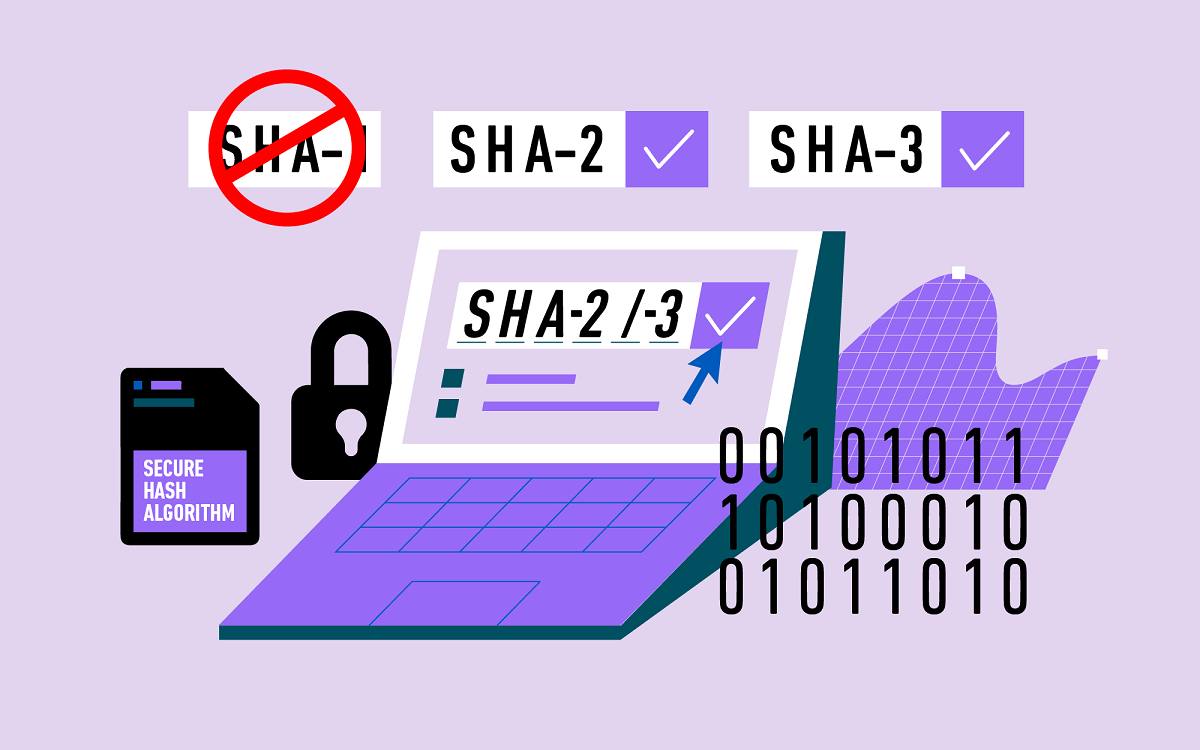SHA-1, or Secure Hash Algorithm 1, has long been a stalwart in the world of cryptography. But as we move deeper into the 21st century, the question looms: is SHA-1 still secure, or has it become obsolete? To unravel this query, we must embark on a detailed exploration of SHA-1’s history, its vulnerabilities, and the evolving cryptographic landscape.
Developed by the National Security Agency (NSA) and published by the National Institute of Standards and Technology (NIST) in 1995, SHA-1 was hailed for its ability to produce a 160-bit hash value, making it suitable for various applications, especially digital signatures and integrity verification. This hashing algorithm became a foundational element in many security protocols, including SSL and TLS. But as time has progressed, the robustness of SHA-1 has come into question.
While SHA-1 was once deemed revolutionary, its vulnerabilities have emerged as a stark reality. The first crack in its armor came in 2005, when cryptanalysts demonstrated that it was possible to produce two distinct inputs that hash to the same output, a phenomenon known as a collision. This revelation was like a proverbial canary in the coal mine, signaling that the security of SHA-1 was not as invulnerable as once believed.
Fast forward to 2017, and the specter of vulnerability became alarmingly tangible. Researchers at Google and CWI Amsterdam successfully orchestrated a practical collision attack on SHA-1, aptly named “SHAttered.” This achievement provided empirical evidence that SHA-1 could no longer be considered a reliable cryptographic tool for safeguarding data. With the utilization of cloud computing and expansive computing resources, the time it took to execute this attack dropped precipitously, making it accessible to a broader range of potential adversaries.
One must ponder: if SHA-1 is indeed obsolete, what ramifications does this bear for organizations still clinging to its usage? Numerous enterprises rely on SHA-1 for digital signatures and certificates. The reliance on this outdated standard can create significant vulnerabilities that could be exploited by malicious actors. In a landscape where data breaches and cyberattacks make headlines daily, transitioning away from SHA-1 should not merely be considered best practice; it is imperative.
This urgency begs the question: what alternatives exist? The cryptographic community has largely shifted towards more secure hashing algorithms, such as SHA-256 and the SHA-3 family. These alternatives not only provide a higher level of security with increased hash lengths but also employ different mathematical foundations, thus mitigating the collision vulnerabilities that plague SHA-1. Transitioning to a more secure hashing method is not just a matter of choice; it is a necessity in a world where data integrity and cybersecurity are of paramount concern.
Switching away from SHA-1 may invite hesitation, especially for institutions with extensive legacy systems built around this algorithm. The challenge lies in mass migration to newer protocols while ensuring business continuity. This mission might seem daunting, yet the ramifications of inaction are potentially catastrophic. Thus, the challenge presents itself as a dual-edged sword: how does an organization effectively phase out SHA-1 without introducing new vulnerabilities during the transition? Proper planning, testing, and phased implementation will be crucial in navigating this treacherous terrain.
As organizations consider this critical transition, they must also grapple with the overarching regulatory landscape. Compliance with industry standards and regulations is increasingly tethered to using robust cryptographic measures. Institutions in finance, healthcare, and other regulated sectors could face significant penalties if they fail to adopt more secure practices. Consequently, adherence to new cryptographic standards not only safeguards data but also fortifies an institution’s legal standing in an era of stringent regulations.
Interestingly, the consensus among security experts is crystal clear: moving away from SHA-1 is not a suggestion but a mandate. Awareness campaigns, industry conferences, and educational resources proliferate to arm organizations with the knowledge needed for this paradigm shift. In parallel, emerging technologies, such as blockchain and quantum-resistant algorithms, hint at an evolving future in cryptography, where SHA-1 will be relegated to the annals of history.
Additionally, the very notion of a “one-size-fits-all” algorithm is being continually challenged. The advancing landscape of cybersecurity necessitates diverse cryptographic strategies—an adoption not just of alternatives to SHA-1, but a comprehensive reevaluation of hashing methods tailored to specific applications. Tailored cryptographic approaches can provide enhanced security while accommodating the unique challenges presented by different industries.
The underlying truth about SHA-1 is stark: its obsolescence is not merely an academic debate but a pressing reality that demands urgent attention. Organizations that cling to this relic risk undermining their security posture in a world fraught with uncertainties. Embracing the call to transition away from SHA-1 not only safeguards data but enhances trust in a system continually beset by vulnerabilities. Remember, the strength of a security infrastructure is only as robust as its weakest link, and SHA-1 has shown itself to be a precarious liability for those who still rely upon it.
In conclusion, the question of whether SHA-1 is secure or obsolete is one that has been decisively answered. As we forge ahead in this digital age, the imperative to evolve beyond outdated cryptographic practices stands clear. The time to act is now—before complacency leads to calamity.








Leave a Comment